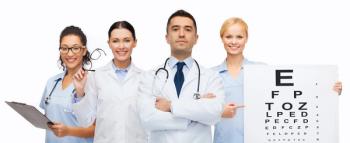
AOA 2023: Taking a modern approach to dry eye
Jessilin Quint, OD, MBA, MS, FAAO, shares the latest and greatest in the world of dry eye, from new technology to how clinicians can start in on dry eye therapy today.
At AOA 2023, Jessilin Quint, OD, MBA, MS, FAAO, is educating the masses on all things dry eye. She discusses new tech, but also takes clinicians back to the basics: For those who are looking to start implementing
Video transcript
Emily Kaiser:
Hi everyone. I'm Emily Kaiser with Optometry Times, and I'm sitting down with Dr. Jessilin Quint, who is presenting a course entitled, "A modern approach to dry eye," at Optometry's Meeting, which is hosted by the AOA in Washington, DC. Welcome Dr. Quint. Thanks for taking the time to talk to us.
Jessilin Quint, OD, MBA, MS, FAAO:
Thank you for having me. I'm so excited to be here.
Kaiser:
Yeah, we're excited to have you. So first, can you give us a brief overview of your course?
Quint:
Absolutely. So It's a 2-hour dry-eye-focused course, called, "A modern approach to dry eye," and we're going to cover everything from obviously what the condition is to diagnostics to modern day treatment options, and everything in between. So I want people, attendees, who are there to walk away with very real-world clinical knowledge so that if they were going to clinic right afterwards, or the next day, they could directly apply that to their patient care. So we're covering everything very modern. So radiofrequency, IPL [intense pulsed light], amniotic membranes, you know, all the therapeutics, you know, drops, nasal sprays, and everything in between. So It's It's going to be really fun.
Kaiser:
It sounds like it. I'm excited.
Quint:
Yeah.
Kaiser:
So what do you hope that optometrists take away from your talk?
Quint:
I hope that they take away that dry eye is way more common, way more patients have it than maybe we realize. And while it can be very multifactorial, and that sometimes can be very overwhelming, I hope I am able to break it down in a sense that, you know, here are the basics. Here's a good kind of 3-step approach to it. And so that it doesn't make it so that it's overwhelming to be able to provide the patient the education, the knowledge, and the care that they need.
And also, I'm lucky enough that I practice in a dry eye center where we have all the bells and whistles. But it's also when you're just getting started, you don't have to have all the fancy equipment in order to start getting involved in dry eye. And so in the lecture, I point that out as well. Like this is where you can start, this is where you can build from, and then when you get to a point where you can have all the bells and whistles, you know, these are all of your options for that. And sometimes that information is good, too, because when you are trying to decide what to buy next, or where you want to spend your hard-earned money, it's nice to have an overview. And so hopefully I'll be able to give that for the attendees.
Kaiser:
Yeah, that sounds fantastic. So how will the information trickle down to patient care?
Quint:
So we've talked a lot about patient cases. I usually use a 3-step approach for modern dry eye: Looking at the lids, looking at the cornea, and then obviously looking at the meibomian glands that are there. And so really just taking that 3-step approach to every patient and walking them through with case examples of how that can directly apply.
Kaiser:
Fantastic. Well, thank you so much for taking the time to tell me a little bit more about your talk, and I can't wait to see you in Washington, DC.
Quint:
Absolutely. See you there.
Newsletter
Want more insights like this? Subscribe to Optometry Times and get clinical pearls and practice tips delivered straight to your inbox.

















































.png)


